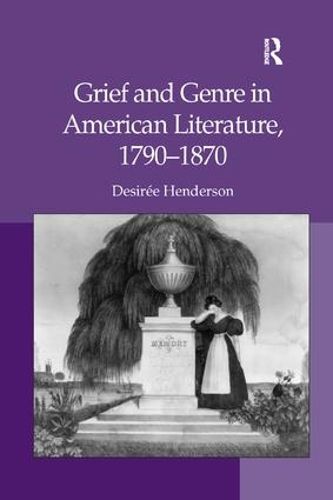Readings Newsletter
Become a Readings Member to make your shopping experience even easier.
Sign in or sign up for free!
You’re not far away from qualifying for FREE standard shipping within Australia
You’ve qualified for FREE standard shipping within Australia
The cart is loading…






Focusing on the role of genre in the formation of dominant conceptions of death and dying, Desiree Henderson examines literary texts and social spaces devoted to death and mourning in eighteenth- and nineteenth-century America. Henderson shows how William Hill Brown, Susanna Rowson, and Hannah Webster borrowed from and challenged funeral sermon conventions in their novelistic portrayals of the deaths of fallen women; contrasts the eulogies for George Washington with William Apess’s Eulogy for King Philip to expose conflicts between national ideology and indigenous history; examines Frederick Douglass’s use of the slave cemetery to represent the costs of slavery for African American families; suggests that the ideas about democracy materialized in Civil War cemeteries and monuments influenced Walt Whitman’s war elegies; and offers new contexts for analyzing Elizabeth Stuart Phelps’s The Gates Ajar and Emily Dickinson’s poetry as works that explore the consequences of female writers claiming authority over the mourning process. Informed by extensive archival research, Henderson’s study eloquently speaks to the ways in which authors adopted, revised, or rejected the conventions of memorial literature, choices that disclose their location within decisive debates about appropriate gender roles and sexual practices, national identity and citizenship, the consequences of slavery, the nature of democratic representation, and structures of authorship and literary authority.
$9.00 standard shipping within Australia
FREE standard shipping within Australia for orders over $100.00
Express & International shipping calculated at checkout
Focusing on the role of genre in the formation of dominant conceptions of death and dying, Desiree Henderson examines literary texts and social spaces devoted to death and mourning in eighteenth- and nineteenth-century America. Henderson shows how William Hill Brown, Susanna Rowson, and Hannah Webster borrowed from and challenged funeral sermon conventions in their novelistic portrayals of the deaths of fallen women; contrasts the eulogies for George Washington with William Apess’s Eulogy for King Philip to expose conflicts between national ideology and indigenous history; examines Frederick Douglass’s use of the slave cemetery to represent the costs of slavery for African American families; suggests that the ideas about democracy materialized in Civil War cemeteries and monuments influenced Walt Whitman’s war elegies; and offers new contexts for analyzing Elizabeth Stuart Phelps’s The Gates Ajar and Emily Dickinson’s poetry as works that explore the consequences of female writers claiming authority over the mourning process. Informed by extensive archival research, Henderson’s study eloquently speaks to the ways in which authors adopted, revised, or rejected the conventions of memorial literature, choices that disclose their location within decisive debates about appropriate gender roles and sexual practices, national identity and citizenship, the consequences of slavery, the nature of democratic representation, and structures of authorship and literary authority.